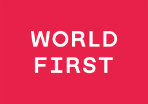Our Top 2 Digital Money Transfer Providers for UK to Iran
| Provider | Amount Received | Fee | Exchange Rate | Speed | ||
|---|---|---|---|---|---|---|
 |
MoneyGram | IRR ﷼ 10,583,058.59 | £5.00 | 52915.2929 | more... | |
 |
Average of Example High Street Bank Rates | IRR ﷼ 10,264,606.63 | £9.50 | 51323.0331 | 1-5 days | more... |







